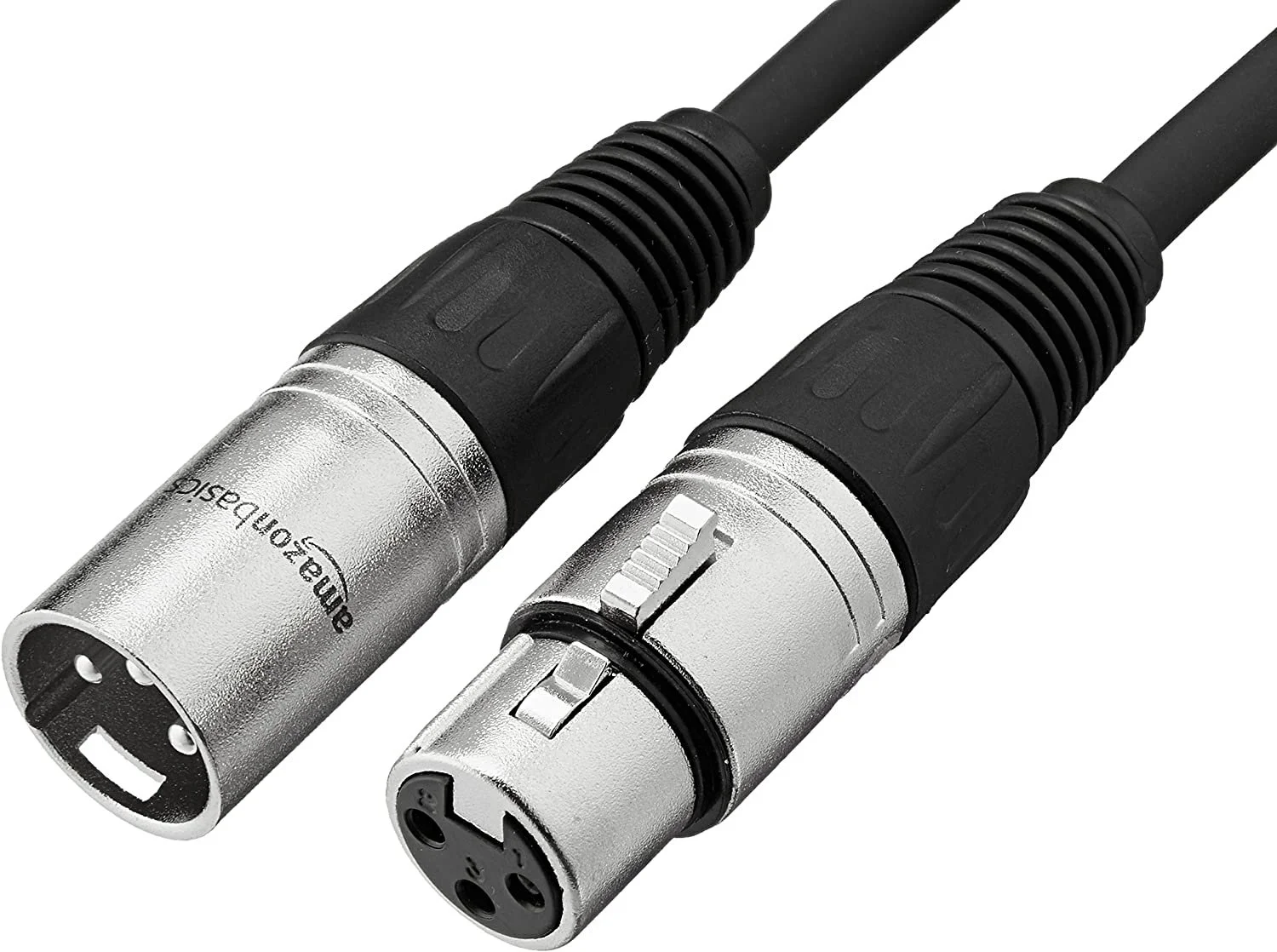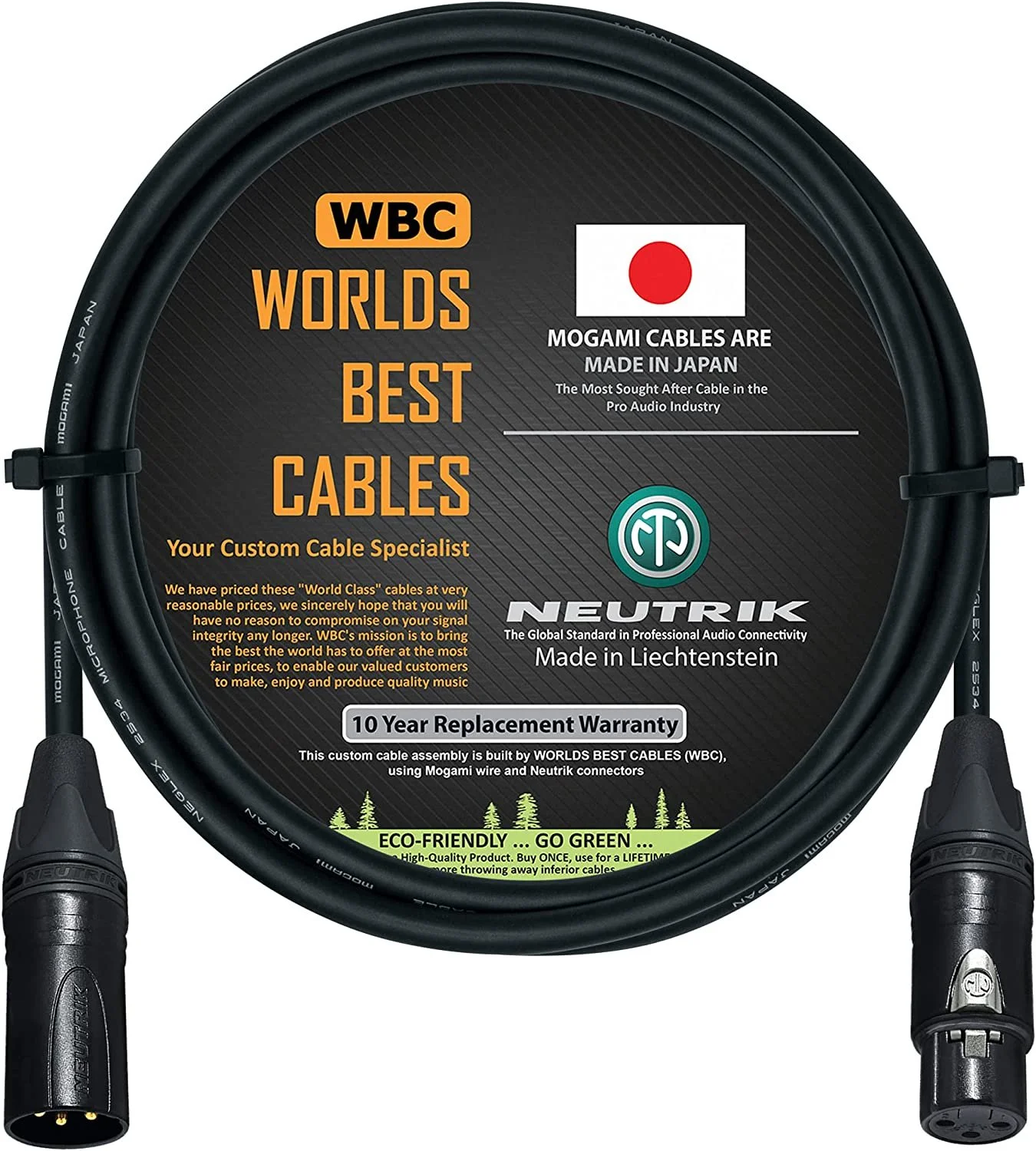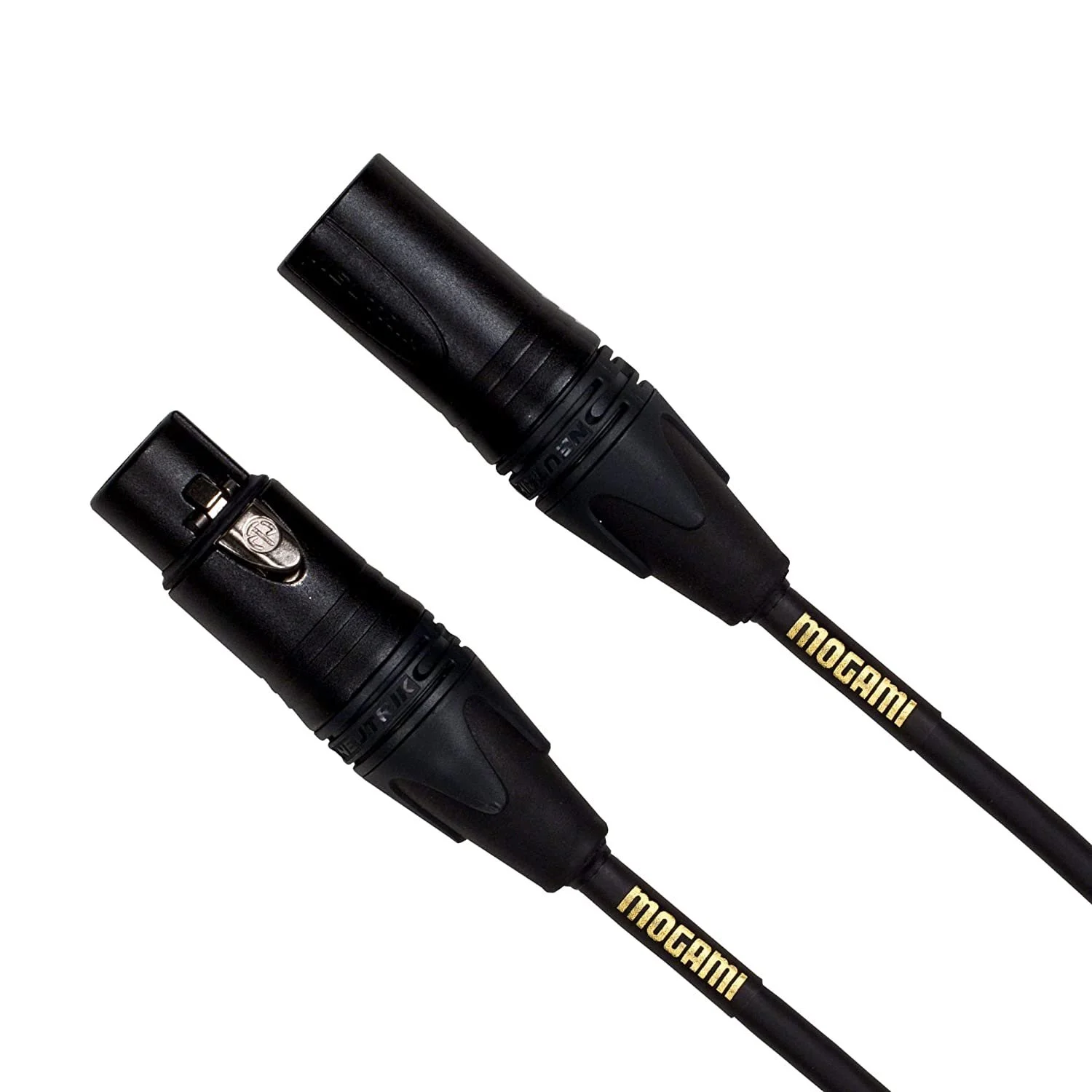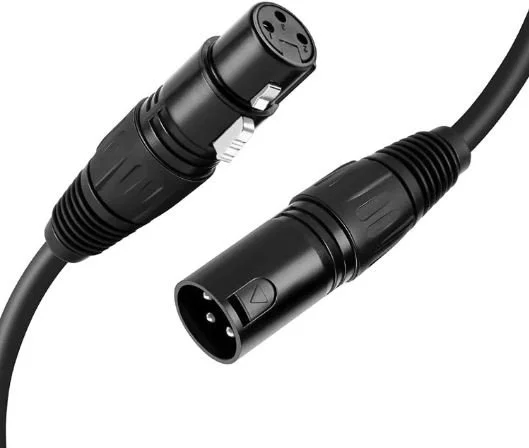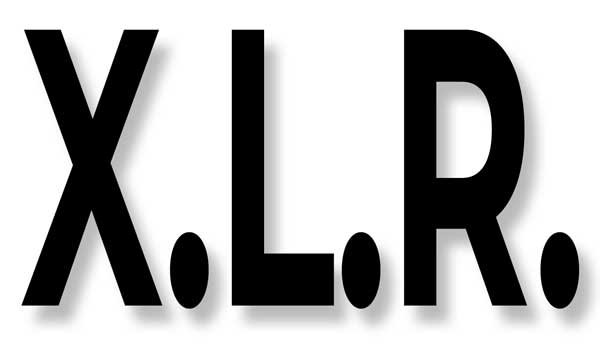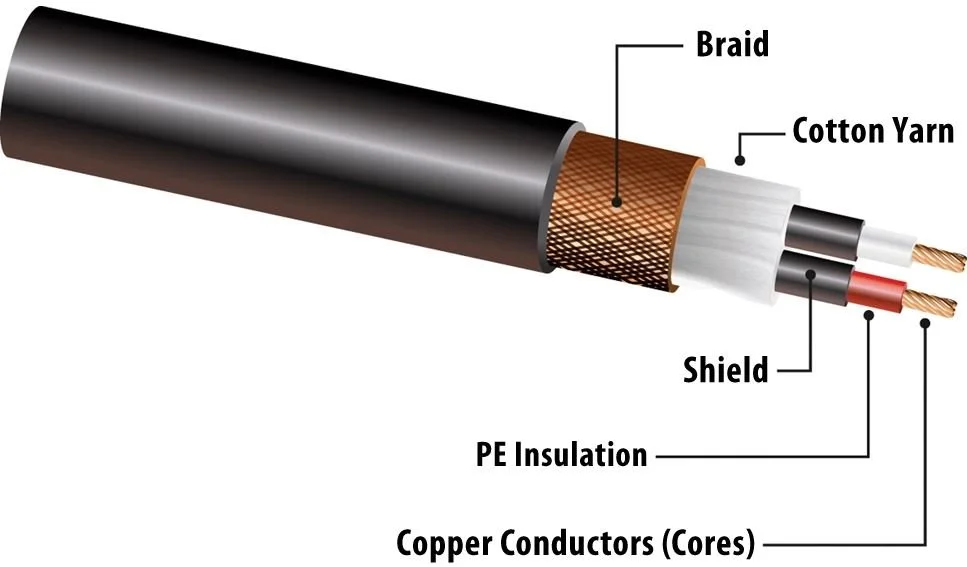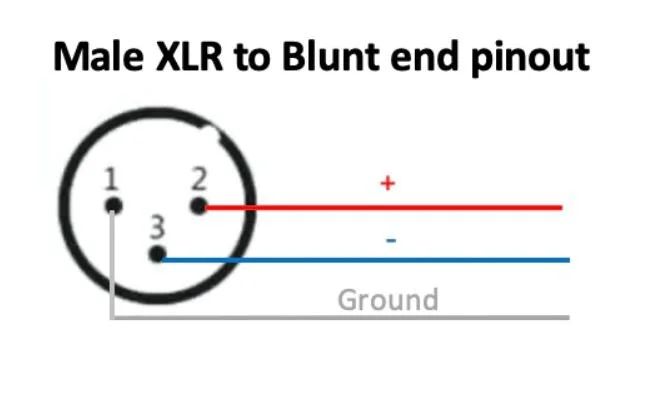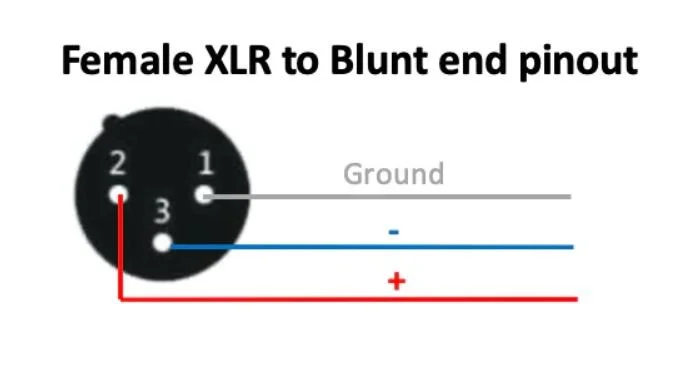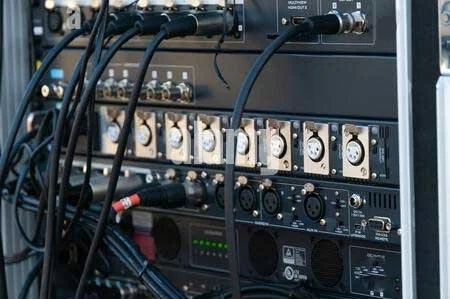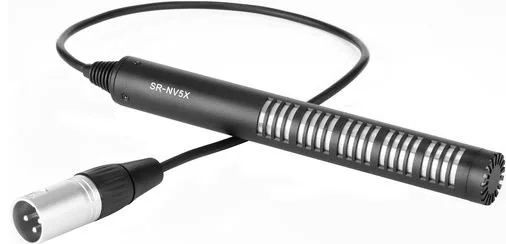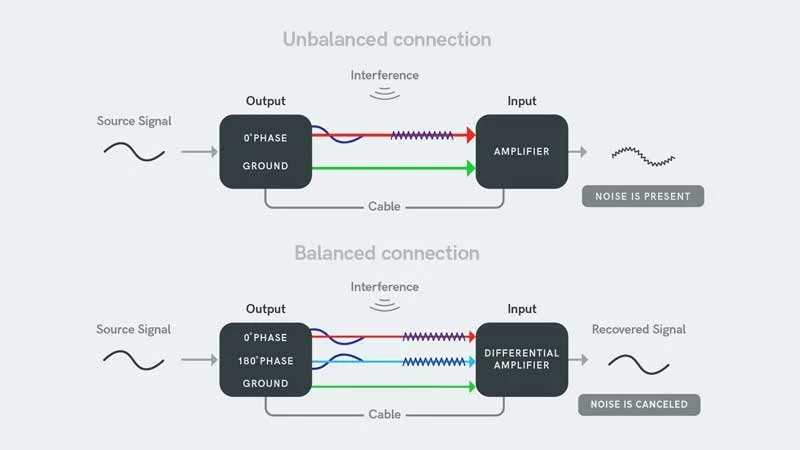Best XLR Microphone Cable for Condenser Mic
Learn if high quality XLR cables really matter, and which one is best for you.
XLR microphone cables are an essential component of any audio or sound recording setup.
They are used to connect a microphone to a mixing console, amplifier, or other audio device.
The XLR cable has become the standard for professional audio equipment due to its durability, reliability, and ability to transmit a balanced audio signal.
Table of Contents:
- Best XLR Microphone Cables
- XLR Cable Definition
- What Does XLR Stand For?
- How To Choose an XLR Cable
- XLR Cable & Connector Diagrams
- What Is XLR Cable Used For?
- What Is An XLR Microphone?
- Do High Quality XLR Cables Make A Difference?
- What Is The Highest Quality XLR Cable?
- Balanced vs Unbalanced XLR
- DMX Cable vs XLR Cable
- Does XLR to 3.5mm Work?
Best XLR Microphone Cables
Below you’ll find XLR cable recommendations for any budget from beginner to professional.
Cheapest Available: Amazon Basics XLR Cable
Affordable + Color Options: LyxPro XLR Cable
Best Value: World’s Best Cables
The Gold Standard: Mogami Gold Studio
Most Durable: Pig Hog 8mm XLR Cable
High Quality + Color Options: Canare L-4E6S
Remember, though more costly, higher quality XLR cables are a worthy investment for anyone working with sound, and have the following benefits:
made from better materials & are better shielded against RF noise
more durable and reliable, even under heavy use
less likely to experience signal degradation over time
Cheapest Option To Get The Job Done
The Amazon Basics XLR Cable is one of the most affordable XLR cables on the market today.
It’s available in a wide range of lengths including 3’/6’/10’/15’/25’/50’.
No color options besides black.
The conductors are twisted pair copper design with 2 conductors. This is the traditional conductor design and is one of the most common designs in XLR cables.
The Amazon Basics XLR Cable is shielded by a copper spiral at a spec of 98% copper coverage. This shielding design makes the Amazon Basics cable extremely flexible. However, the downside of this type of shielding is durability during rough use or the long-term.
If the cable is bent at a sharp or aggressive angle, the copper spiral can become bent out of shape, and will not return to shape after use. This results in a gap in shielding that can make the cable prone to RF noise.
The XLR connectors themselves are medium to low quality with many reports of users having connectivity issues with various devices and microphones. However, they are locking which is a nice feature. The pins are not gold plated, which makes them susceptible to corrosion if not properly cared for.
Comes with 1 year warranty.
Bottom Line: If you’re new to audio, this is a great cable to get started with. Saving money here will help you put that money towards other gear that will be more beneficial as a beginner such as mic stands, mic clamps, and shock mounts. However, if you’re working with more expensive gear or in a production environment, look elsewhere.
Cheap + Color Options
LyxPro XLR cables are almost as affordable as the Amazon Basics, but come in a wide variety of color options.
Besides using colored XLR cables for their aesthetic purposes, they can also be useful for organization and patching when you’re dealing with many cables.
By marking your connections with colored XLR cables, making the proper connections is easy. No more “following the cable” game.
Build quality wise, the LyxPro cables are on par with the Amazon Basics:
twisted pair conductors
silver pins
98% coverage spiral copper shielding
Bottom Line: The LyxPro XLR Cables are great for beginners wanting to add a little color to their recording setup. For pros dealing with many audio feeds, choose a higher quality XLR cable with color options.
Best Value Option
World’s Best Cables makes high quality XLR cables using some of the best materials and components available at a great price.
These are my preferred cables of choice. I have been using them for 2 years under harsh outdoor conditions with zero issues whatsoever.
For cable, they use Mogami 2534 Quad Cord cable with 4 conductors and a spiral bare copper shield.
The quad core design provides an improvement in signal to noise of 10-20db over equivalent twisted pair cables, allowing the use of longer cable runs with no drop in sound quality.
The connectors are Neutrik NC3XX with gold contact pins for superior corrosion resistance.
Several different lengths are available including .5’/3’/4’/6’/10’.
No color options besides black.
Bottom Line: If you’re looking for quality without having to spend a fortune, World’s Best Cables are a great choice. I highly recommend these XLR cables.
The Gold Standard
The Mogami Gold Studio is the “gold standard” when it comes to XLR cables.
Though more expensive than the World’s Best Cables (above), the Mogami Gold Studio feature the exact same components:
Mogami 2534 Quad Core Cable
Neutrik NC3XX gold plated connectors
However, the difference is that the Mogami cables are manufactured in Japan instead of Sri Lanka, and come with a lifetime warranty.
With tighter production tolerances, more attention to detail, and lifetime warranty, the Mogami Gold Studio continues to be one of the most popular XLR cables in use today.
No color options besides black.
Bottom Line: The Mogami Gold Studio is referred to as the “gold standard” when it comes to XLR cables for good reason. The extra cost is worth the lifetime warranty alone.
Most Durable
The Pig Hog 8mm XLR Cable is the most durable option on the market.
Coated in a thick layer of rubber, Pig Hog cables are incredibly rugged and resistant to kinks and tangles.
However, this durability comes at a cost of weight and flexibility.
Available in the following cable lengths 3'/6'/15'/20'/30'/50'.
No color option besides black.
Lifetime warranty.
High Quality + Colors
The Canare L-4E6S is a high quality XLR cable with a wide range of color options.
The L-4E6S uses a quad core cable with a 4-conductor design that is engineered to substantially reduce vulnerability to electromagnetic and radio-frequency interference when compared with 2-conductor cables.
The cable uses a 96% coverage braided copper shield, designed to maintain effective shielding performance, regardless of how many times the cable is unwound, bent, twisted or rewound. This shielding design offers superior durability at the cost of slightly less flexibility in comparison to traditional spiral copper shielding.
Cable lengths available include a huge selection of options from 1 foot to 200 feet.
Colors include black, blue, gray, green, red, white, yellow, orange, purple, and brown.
Bottom Line: If you’re looking for a high quality XLR cable available in a wide range of colors, look no further than the Canare L-4E6S.
XLR Cable Definition
An XLR cable is a type of electrical cable that is commonly used in professional audio equipment. It is equipped with XLR connectors on both ends, which provide a secure and stable connection.
The XLR cable is designed to transmit a balanced audio signal, which helps to reduce noise and interference in the audio signal.
The XLR connector has three pins inside, with the first pin being the ground or shield, the second pin being the positive or hot, and the third pin being the negative or cold.
This arrangement helps to reduce noise and interference in the audio signal, and provides a clean and clear sound.
Benefits:
One of the key benefits of using an XLR cable is the balanced audio signal it transmits.
A balanced audio signal is one that uses two conductors to carry the audio signal, with one conductor carrying the positive part of the signal and the other conductor carrying the negative part. This helps to reduce noise and interference, as any noise that is introduced into the signal will be equally present on both conductors, and will be canceled out when the signal is recombined.
Balanced audio signals are especially important in professional audio setups, where long cable runs or noisy environments can introduce significant amounts of noise into the signal. By using an XLR cable, you can ensure that your audio signal remains clean and clear, even in challenging environments.
Another advantage of using an XLR cable is its durability.
XLR cables are built to withstand the rigors of regular use, and are often coated with a protective material to help prevent damage from wear and tear. This makes them ideal for use in live sound reinforcement, where cables are frequently moved and connected to different equipment.
The XLR cable is also designed to be easy to use.
The cylindrical connector provides a secure and stable connection, and the locking mechanism helps to prevent accidental disconnections. This makes it simple to connect and disconnect equipment, even in fast-paced environments.
What Does XLR Stand For?
XLR stands for "X-series locking connector, circular."
It is a type of electrical connector that is commonly used in professional audio equipment, such as microphones, mixing consoles, and amplifiers.
The XLR connector was first introduced by Cannon Electric in the 1950s and has since become the standard for professional audio equipment.
The "X" in the name XLR refers to the fact that the connector is designed with a locking mechanism to prevent accidental disconnections. The "L" in the name refers to the circular shape of the connector.
How To Choose an XLR Cable
When choosing an XLR cable, there are a few key factors to consider:
Length
Quality
Connector
The first is the length of the cable. It's important to choose a cable that is the right length for your setup, as longer cables can introduce more noise and interference into the signal.
Another factor to consider is the quality of the cable.
Higher quality cables are made from better materials and are more durable, which can help to improve the overall sound quality of your audio signal. It's also important to choose a cable that is designed for the specific type of audio equipment you are using.
For example, there are XLR cables that are specifically designed for use with dynamic microphones, while others are designed for use with condenser microphones.
Finally, it's important to consider the type of connector that is used on the XLR cable.
Some connectors are designed to be more secure and durable, while others are more compact and lightweight. Depending on your specific needs, you may want to choose a connector that provides a better grip, or one that is more easily removable.
XLR Cable & Connector Diagrams
Below you’ll find useful diagrams for XLR cables including:
XLR Cable Diagram
Male XLR Pinout
Female XLR Pinout
These diagrams can help you better understand what goes into manufacturing an XLR cable, as well as provide you with a guide for wiring your own, should you want to DIY your own XLR cable, or repair an existing XLR cable.
XLR Cable Diagram:
Male XLR Pinout:
*Note: Male & Female pins can depend on the manufacturer. Always check manufacturer specifications before soldering any connections.
Female XLR Pinout:
*Note: Male & Female pins can depend on the manufacturer. Always check manufacturer specifications before soldering any connections.
What Is XLR Cable Used For?
An XLR cable is used to transmit a balanced audio signal from a microphone or other audio device to a mixing console, amplifier, or other audio equipment.
The XLR connector is designed to transmit a balanced audio signal, which helps to reduce noise and interference in the audio signal.
This makes the XLR cable an ideal choice for professional audio applications, such as recording studios, live sound reinforcement, and broadcast studios.
In addition to microphones, XLR cables can also be used with other types of audio equipment, such as direct input (DI) boxes, which are used to connect musical instruments to a mixing console.
What Is An XLR Microphone?
An XLR microphone is a type of microphone that uses an XLR connector to transmit its audio signal. The XLR connector is a cylindrical connector that has three pins inside, and is commonly used in professional audio equipment.
XLR microphones are typically used in professional audio settings, such as recording studios, live sound reinforcement, and broadcast studios. They are popular due to their ability to transmit a balanced audio signal, which helps to reduce noise and interference in the audio signal.
There are two main types of XLR microphones:
dynamic microphones
condenser microphones
Dynamic microphones do not require phantom power and are typically used for live sound reinforcement, as they are more durable and can handle higher sound pressure levels.
Condenser microphones require phantom power and are often used in recording studios, as they are more sensitive and can provide a more detailed and accurate representation of the sound being recorded.
XLR microphones are available in a wide range of styles and sizes, including handheld, lavalier, and shotgun microphones. They are also available with different polar patterns, such as omnidirectional, cardioid, and figure-eight, which determine the directionality of the microphone and how it picks up sound.
Do High Quality XLR Cables Make A Difference?
Yes, high quality XLR cables can make a difference in the quality of the audio signal being transmitted. The quality of the cable can impact the overall sound quality, as well as the reliability and durability of the cable.
A high quality XLR cable is typically made from better materials and is better shielded, which can help to reduce noise and interference in the audio signal. This can result in a clearer and more accurate sound, with less hiss or hum in the background.
In addition, high quality XLR cables are typically more durable and reliable, which can help to ensure that your audio signal remains clean and clear even with heavy use. They are also less likely to experience signal degradation over time, which can result in a more consistent and reliable performance.
It's important to note that while high quality XLR cables can make a difference, they are not the only factor in determining the overall quality of the audio signal. Other factors, such as the quality of the microphone, mixer, or amplifier, can also play a role in determining the final sound quality.
In general, if you are looking to improve the quality of your audio signal, investing in high quality XLR cables is a good place to start. However, it's also important to consider other factors, such as the quality of your other audio equipment, in order to get the best possible sound.
What Is The Highest Quality XLR Cable?
It's difficult to determine the highest quality XLR cable as there are many factors to consider, such as the materials used, the shielding, and the manufacturing process. However, some brands that are known for producing high quality XLR cables include:
Mogami:
Mogami cables are known for their exceptional clarity and durability, and are used by many professional audio engineers and musicians.
Canare:
Canare cables are known for their high-quality construction and precision manufacturing process, which results in a consistent and reliable performance.
Neutrik:
Neutrik is a well-known brand in the audio industry, and their XLR cables are known for their high-quality connectors and robust construction.
Hosa:
Hosa is a company that specializes in audio cables, and their XLR cables are known for their affordability and high quality.
Pro Co:
Pro Co is a well-respected brand in the professional audio industry, and their XLR cables are known for their exceptional sound quality and durability.
It's important to keep in mind that the highest quality XLR cable for one person may not be the highest quality for another. The best XLR cable for you will depend on your specific needs and budget.
Before purchasing an XLR cable, it's a good idea to research different options and read reviews from other users to help determine which cable is the best fit for you.
Balanced vs Unbalanced XLR
All XLR cables are balanced unless they are wired incorrectly.
Balanced and unbalanced are terms used to describe different types of audio signals and cables.
A balanced audio signal uses two conductors to carry the audio signal, with one conductor carrying the positive part of the signal and the other conductor carrying the negative part. This helps to reduce noise and interference in the audio signal, as any noise that is introduced into the signal will be equally present on both conductors, and will be canceled out when the signal is recombined.
An unbalanced audio signal, on the other hand, uses a single conductor to carry the audio signal, and a separate conductor to carry the ground or shield. This type of signal is more susceptible to noise and interference, as any noise that is introduced into the signal will be present in the final audio signal.
XLR cables are typically used to transmit balanced audio signals. The XLR connector has three pins inside, with the first pin being the ground or shield, the second pin being the positive or hot, and the third pin being the negative or cold. This helps to reduce noise and interference in the audio signal, and provides a clean and clear sound.
DMX Cable vs XLR Cable
As DMX cables and XLR cables are both commonly used in entertainment industries, there can be some confusion between the two. However, DMX and XLR cables are slightly different and serve entirely unique purposes.
DMX cable is used to transmit DMX512 signals, which are used to control lighting and special effects equipment. DMX signals contain information about the intensity, color, and position of lights, as well as other types of information that are used to control lighting and special effects equipment.
DMX cables have 3-5 pins, and are designed to transmit DMX512 signals over long distances without degradation or loss of information.
XLR cable, on the other hand, is used to transmit balanced audio signals.
XLR cables have 3-5 pins, and are used to connect microphones, mixing consoles, and other audio equipment. They are designed to reduce noise and interference in the audio signal, and provide a clean and clear sound.
Although you may be tempted to use an XLR cable for a DMX connection in a pinch, XLR cables are lower impedance and cannot transfer DMX signals very well.
Does XLR to 3.5mm Work?
Yes, it is possible to connect an XLR cable to a 3.5mm (1/8-inch) audio device, with an appropriate adapter.
However, since 3.5mm cables are used for unbalanced audio signals, the sound quality may be impacted when using an XLR cable with a 3.5mm adapter.
In addition, the impedance and voltage levels of the XLR cable and the 3.5mm device may not be compatible, which can also impact the sound quality.
To ensure the best possible sound quality, it's recommended to use an adapter or cable that is specifically designed for this purpose, and to use equipment that is compatible with the XLR cable.
Support Acoustic Nature
If you enjoyed this post and would like to help support Acoustic Nature, please consider "buying me a coffee" or becoming a Patreon with the buttons below.
As a thank you for your support, Patreon supporters receive a copy of Field Recording For Beginners, exclusive access to the full Behind The Sounds video series, nature sound library downloads, and more.
If you are unable to support the site financially, please share this post with others, or leave a comment below letting me know you enjoyed this post! Both are free and help the website grow. Thank you ♫
Thanks for reading,
-Jared


